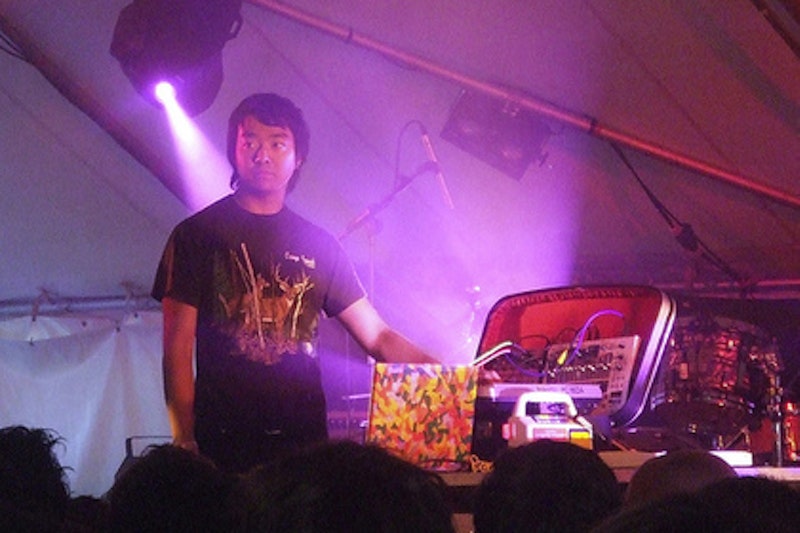"When a musician plays a dynamic, physical instrument, the movements that he makes directly create a sound. A guitarist, held into a certain position by the instrument and forced to use a pick in one hand, will naturally accentuate the movement that sets the strings vibrating. But the computer programmer, who simply (in the live context) presses a button to create a wall of sound, isn’t physically linked to the production of sound in the same way. In short, a good portion of the work that goes into creating electronic music happens behind the scenes. The product, and all the designed sounds, are endlessly interesting, but the process doesn’t have any meaningful live analogy.
I saw this effect in action in Fuck Buttons’ performance. They opened their set with a chiming, asymmetrically patterned sample of bells. Allowing this to lull the audience into a false sense of security, they twisted a knob to drop a fuzzed-out wall of guitar onto the hapless but tenacious bells. Each time they did so, the band members threw their bodies in some sort of spasm or physical interpretation of the music. The problem was that it felt hollow or affected. It was a conscious choice as much as an extension of the music; it left an impression of theatricality.
Of course, this is a problem that has, at least by some musicians, been solved. Daft Punk transformed their live act into the space-robot, other-world circus that it is precisely for this reason. Their music has always worked, but now they’ve given themselves the visual experience to match.
Unfortunately, the Daft Punk budget is a little steep for your average indie noise two-piece outfit, not to mention divergent from their take on aesthetics. But as more and more young musicians discover electronics as a way to realize the sounds that they are hearing, and as concertgoers continue to demand an exciting live experience, musicians will need to keep looking for a way to provide a little more to look at than dudes in flannel shirts and tight pants pressing a space bar.

